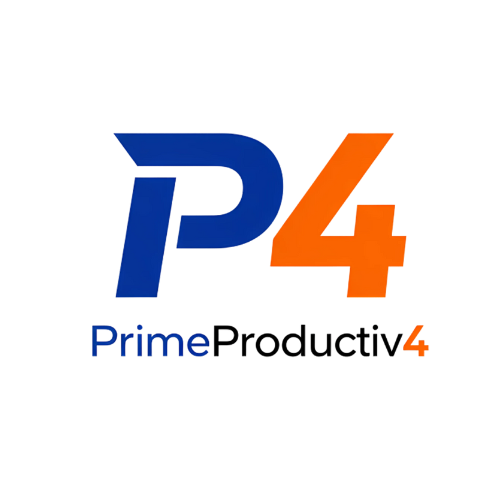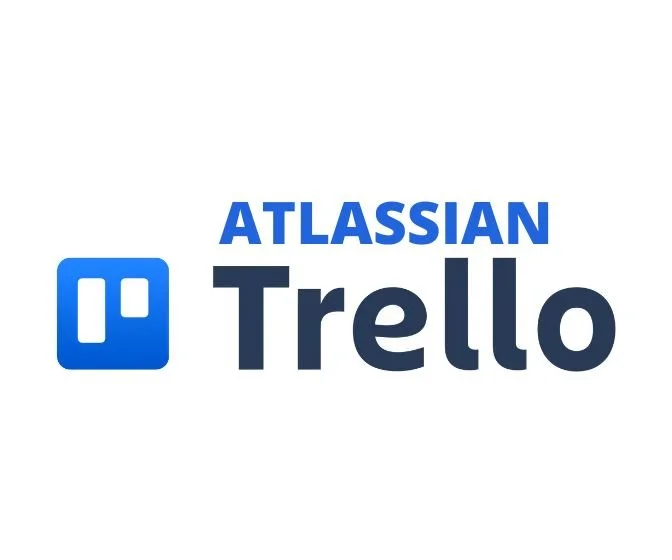Trello
Quick Overview
Type: Web App / Desktop App (Mac & Windows) / Mobile App (iOS & Android)
Pricing: Freemium (Free plan available, paid plans from $5/month if billed annually, $6 billed monthly )
Best For: Teams and individuals who want visual, flexible project management with Kanban boards
Website: https://trello.com
What is Trello?
Trello is a visual collaboration tool that organizes your projects into boards, lists, and cards using the proven Kanban methodology. Imagine a digital whiteboard covered with sticky notes that you can move around - that's Trello. Each board represents a project, each list represents a stage or category, and each card represents a task or item. You simply drag cards from one list to another as work progresses.
What makes Trello special is its perfect balance of simplicity and power. Within minutes of signing up, anyone can create their first board and start organizing tasks - no training required. Yet beneath this simple interface lies a surprisingly powerful system with automation, integrations, custom fields, and advanced features that grow with your needs.
Trusted by millions of teams at companies like Google, Pixar, and Forbes, Trello has become the go-to solution for anyone who thinks visually and wants project management that doesn't feel like project management. Whether you're planning a wedding, managing a software development sprint, coordinating a marketing campaign, or just organizing your personal to-do list, Trello adapts to your workflow rather than forcing you into rigid templates.
Key Features
Kanban Boards - Visual boards with customizable lists and cards that you drag and drop to organize work
Cards with Rich Details - Each card can include descriptions, checklists, due dates, attachments, labels, and comments
Team Collaboration - Assign cards to team members, leave comments, mention colleagues, and work together in real-time
Butler Automation - Create no-code automations with rules, buttons, and scheduled commands to eliminate repetitive tasks
Power-Ups - Extend functionality with 200+ integrations like Calendar view, Slack, Google Drive, and custom fields
Templates - Start quickly with pre-built templates for common workflows (agile sprints, content calendars, hiring pipelines)
Mobile Apps - Full-featured iOS and Android apps let you manage boards on the go
Multiple Views - See your work as boards, timelines, tables, calendars, or dashboards (higher plans)
Unlimited Boards - Create as many boards as you need for different projects and workflows
👍 Pros
Incredibly intuitive interface - anyone can learn it in minutes without training
Visual nature makes it easy to see project status at a glance
Extremely flexible - adapts to almost any workflow or project type
Free plan is genuinely useful for individuals and small teams
Huge ecosystem of Power-Ups and integrations extends functionality
Beautiful, colorful interface makes project management actually enjoyable
Works seamlessly across web, desktop, and mobile devices
Strong community with tons of templates and best practices shared freely
👎 Cons
Can become chaotic with too many boards and cards without discipline
Limited reporting and analytics compared to dedicated PM tools
Free plan Power-Up limit (1 per board) restricts functionality
Not ideal for complex project dependencies and Gantt chart workflows
Can feel too simple for enterprise-level project management needs
Easy to get distracted making boards pretty instead of doing actual work
No built-in time tracking without third-party Power-Ups
File storage limits on free and lower-tier plans
Pricing
Free Plan:
Unlimited cards and up to 10 boards per Workspace
Unlimited Power-Ups (previously limited to 1 per board)
Unlimited storage (10MB per file)
iOS and Android mobile apps
2-factor authentication
Perfect for individuals and small teams
Standard Plan - $5/month per user (billed annually) or $6/month (monthly):
Unlimited boards
Advanced checklists
Custom fields
Unlimited storage (250MB per file)
Saved searches
1,000 Workspace command runs per month
Best for small teams
Premium Plan - $10/month per user (billed annually) or $12.50/month (monthly):
All Standard features
Atlassian Intelligence (AI)
Multiple board views (Timeline, Calendar, Table, Dashboard, Map)
Unlimited Workspace command runs
Admin and security features
Collections to organize boards
Observers (view-only members)
For teams needing advanced features
Enterprise Plan - $17.50/month per user (billed annually):
All Premium features
Unlimited Workspaces
Organization-wide permissions
Public board management
Attachment permissions
Free guests and Multi-Board Guests
Power-Up administration
For large organizations
Integrations
Connects with: Slack, Google Drive, Dropbox, Microsoft Teams, Jira, GitHub, Salesforce, Confluence, Evernote, Mailchimp, and 200+ other tools through Power-Ups and Zapier
Learning Curve
Beginner Friendly: ⭐⭐⭐⭐⭐ (5/5)
Trello is one of the easiest project management tools to learn. The visual, drag-and-drop interface is instantly intuitive - if you've ever used sticky notes, you understand Trello. You can create your first useful board in under 5 minutes. Advanced features like Butler automation have a slight learning curve, but the basics are effortless.
Best Use Cases
Agile/Scrum Development - Manage sprints with boards for backlog, in progress, testing, and done
Content Calendar Management - Plan blog posts, social media, and marketing campaigns visually
Sales Pipeline Tracking - Move deals through stages from lead to closed won
Event Planning - Coordinate tasks, vendors, timelines, and team members for events or weddings
Personal Task Management - Organize your life with boards for work, home projects, shopping lists, and goals
Alternative Apps
If Trello isn't right for you, consider:
Asana - More powerful for complex projects with dependencies, better reporting, less visual
Monday.com - More customizable with advanced automations, but steeper learning curve and higher cost
ClickUp - More features including docs, goals, and time tracking, but can feel overwhelming
Notion - Better for combining project management with documentation and wikis
Jira - Better for software development with advanced issue tracking, more technical
Bottom Line
Trello is the perfect entry point into project management software - friendly enough for beginners yet powerful enough for professional teams. If you're overwhelmed by complex PM tools or still managing projects with spreadsheets and email, Trello provides an intuitive visual alternative that actually makes organizing work enjoyable. The generous free plan makes it risk-free to try, and the paid plans are reasonably priced compared to competitors. While it may lack some advanced features of enterprise tools like Asana or Jira, Trello's simplicity is its strength - you spend less time managing the tool and more time doing actual work. It's ideal for teams that want to get organized quickly without extensive training or complex setup. The visual Kanban approach works brilliantly for most workflows, though teams needing Gantt charts or complex dependencies might need something more robust.
Frequently Asked Questions
Is Trello free?
Yes, Trello offers a robust free plan that includes unlimited cards, unlimited Power-Ups, up to 10 boards per Workspace, and 10MB per file attachment. The free plan is genuinely useful for individuals and small teams. Paid plans start at $5/month per user (billed annually) and add features like unlimited boards, advanced views, larger file uploads, and enhanced automation.
Is Trello good for personal use?
Absolutely! Trello is excellent for personal productivity and organization. Many people use it to manage household projects, plan vacations, track personal goals, organize recipes, or maintain a simple to-do list. The visual interface makes it more engaging than traditional task lists, and the free plan provides everything most individuals need. It's particularly great if you're a visual thinker who likes seeing all your tasks laid out spatially.
Can I use Trello offline?
Trello has limited offline functionality. The mobile apps allow you to view boards and cards you've previously accessed, but you can't make changes while offline. Any edits you attempt offline won't save. Once you're back online, everything syncs automatically. Trello is primarily designed as a cloud-based collaboration tool, so an internet connection is required for full functionality.
How does Trello compare to Asana?
Trello and Asana serve similar purposes but with different approaches. Trello is more visual and uses Kanban boards, making it simpler and more intuitive for beginners. Asana is more powerful for complex projects with dependencies, subtasks, and timeline views, but has a steeper learning curve. Trello is better for teams that want visual simplicity, while Asana is better for teams managing complex workflows with detailed reporting needs. Trello's free plan is more generous, but Asana offers more built-in features without requiring Power-Ups.
What are Power-Ups in Trello?
Power-Ups are integrations and additional features that extend Trello's functionality. Examples include Calendar view, Custom Fields, Voting, Slack integration, and Google Drive attachments. The free plan now allows unlimited Power-Ups (previously limited to 1 per board). Power-Ups let you customize Trello to match your workflow without bloating the core product. There are 200+ Power-Ups available in categories like reporting, automation, file management, and communication.
Can I share Trello boards with people who don't have accounts?
Yes, you can share Trello boards with people outside your team. You can make boards public (anyone with the link can view), create view-only links, or invite specific people as guests. Free accounts have some limitations on the number of guests, but paid plans offer more flexibility. However, to actively participate by moving cards or leaving comments, users will need to create a free Trello account.
Does Trello have Gantt charts?
Trello doesn't have built-in Gantt charts on the free plan, but the Timeline view (available on Premium and Enterprise plans starting at $10/user/month) provides a Gantt-style visualization of your cards with due dates. Additionally, several Power-Ups like Placker and Elegantt add Gantt chart functionality to Trello boards. If Gantt charts are essential to your workflow, tools like Asana or Monday.com might be better suited to your needs.
Get Started
Last Updated: October 2025
Category: Project Management

